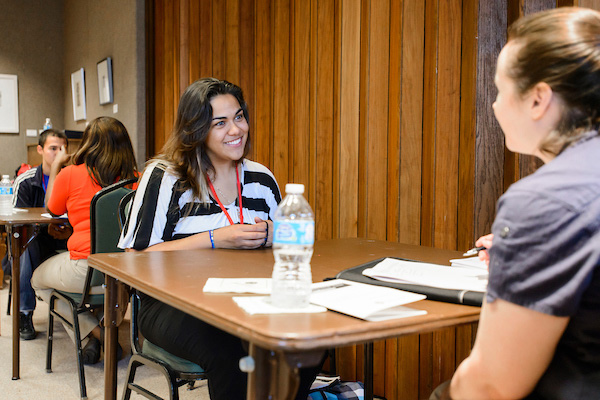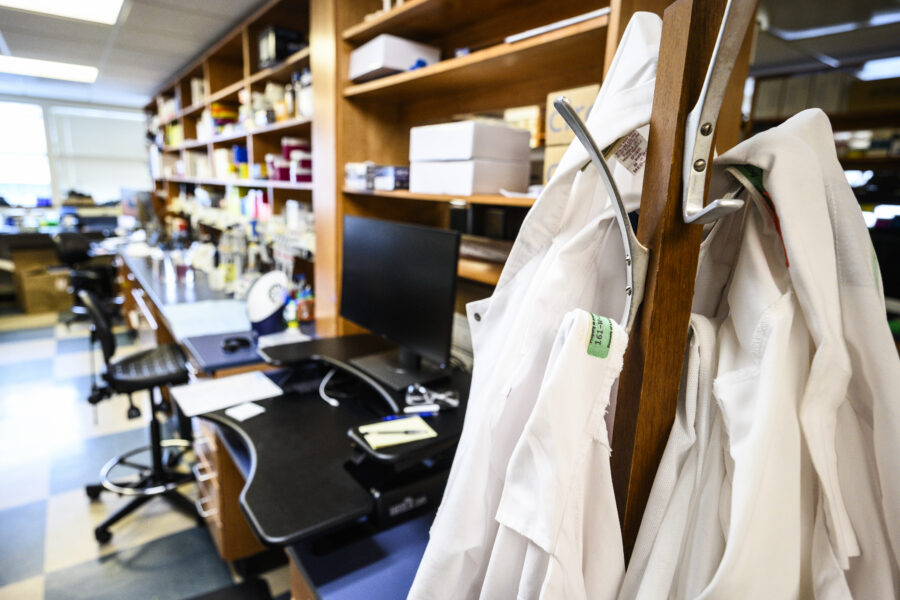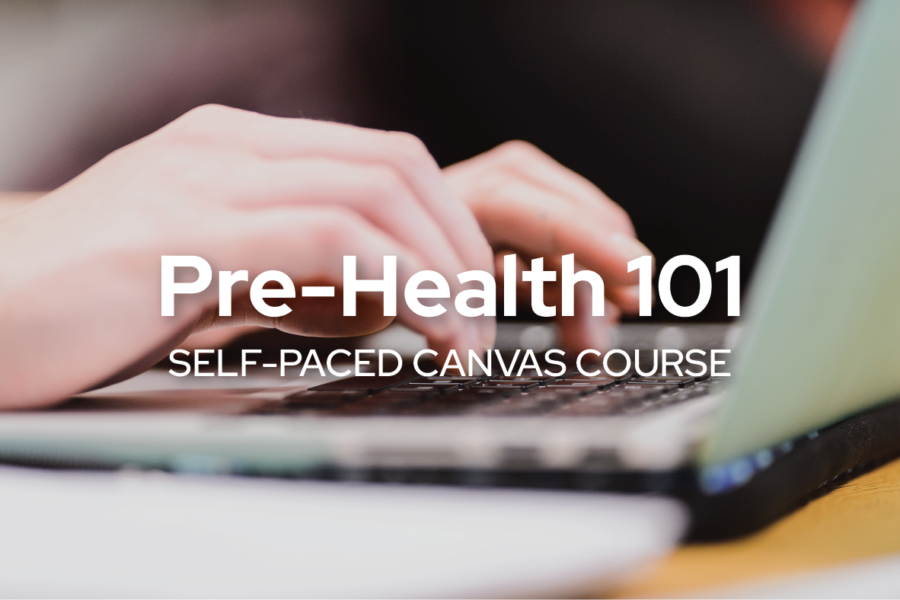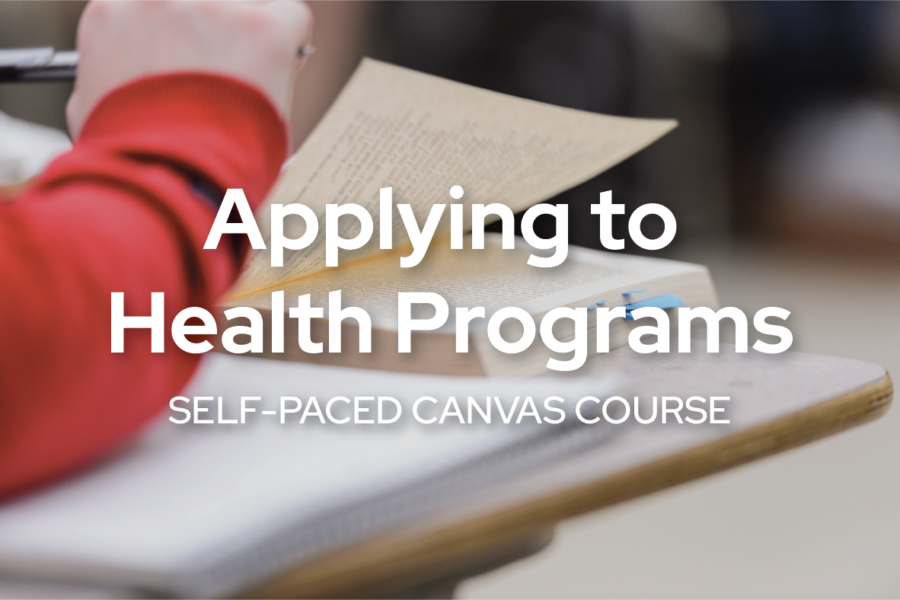About Physical Therapy
Physical Therapists (PTs) develop treatment plans to promote mobility, reduce pain, restore function, and prevent disability. PTs may practice after attending an accredited PT program which may be 2-3 years depending on the program. PTs may be generalists who work with a wide variety of patients, or they may be specialists who focus on a particular population or issue. They can work in hospitals, clinics, rehab facilities, nursing homes, schools, and in home healthcare.
Explore Your Interest in Physical Therapy
Shadowing & Informational Interviews
An excellent way to explore your interest in PT is by observing providers and most PT programs require a certain number of hours of observations in different settings.
Volunteering
PT programs look for applicants who demonstrate a sustained commitment to serving others. Before committing to a job, volunteering in a rehab unit at a hospital is also a great way to learn about the field, talk to PTs, and see how they work within a team.
Jobs
When you are sure that PT is right for you, getting a job as a rehab aide, a trainer, or even working in personal care is a great way to learn about the practical aspects of the field. Confirm that this work is something you enjoy!
Preparing for PT School
PT schools use a process called holistic review to weigh personal factors, academic preparation, and professional experience when reviewing an applicant’s “readiness” for physical therapy. Put together, these create a picture of you as a whole person.
In addition to having a clear motivation for the field, completing required coursework, shadowing, experience in clinical and community settings, and hobbies and interests are common admissions factors for PT schools. You may need to take the GRE depending on the program.
Requirements vary from school to school, so it’s always necessary to consult program websites. Consulting APTA’s comparative chart of DPT Program Prerequisites is a good place to start. Pre-requisite courses may include:
PT Required Coursework
| Topic | Credits/Semesters | UW-Madison Courses | Is AP Accepted? |
|---|---|---|---|
| Biology | 8-10 credits or 1-2 semesters with labs | Choose one of the following sequences: Zoology 101-102 and an additional bioscience course with lab such as Botany 130 or Microbio 101-102 Biology 151-152 Biocore 381-382 AND 383-384 satisfies intro to Bio requirements *Biocore: Students must apply to enroll in Biocore. For more information, visit their website. | If you have AP credit for Biology, plan to enroll in additional advanced Biology (see Additional Biology section below) once you've finished your intro Biology sequence. |
| General Chemistry | 8-10 credits or 1-2 semester with with labs | Choose one of the following sequences: Chemistry 103-104 Chemistry 109* Chem 115-116 (intended for Chem majors) *Many accept Chem 109 as equivalent to two semesters of inorganic chemistry; some may ask for a letter from the UW-Madison Chemistry Department describing the condensed nature of Chem 109. See Pre-Health Advising for more information if you have taken Chem 109 | If you have AP credit for Chem 103, plan on taking Chem 104 so you have chemistry at the college level |
| Physics | 8-10 credits or 1-2 semesters with labs | Choose one of the following sequences: Physics 103-104 (algebra-based) Physics 201-202 (calculus-based; intended for Engineering majors) Physics 207-208 (calculus-based; intended for Life Science majors) * If physics is required for your major, select the sequence recommended by your major. If physics is not required by your major, physics 103-104 is an appropriate choice | Most schools will accept one course at the AP level, but plan on taking at least one course in college. |
| Social Science | Varies widely across programs! May include Intro psych, development, and/or abnormal psych | Intro Psych 202 or 281 (H) Adult Psychopathology Psych 405 Development - some programs want to see human development across the lifespan. Select (1) course from each group: Early Development HDFS 262 Psych 460 Ed Psych 320 Ed Psych 331 Adult Development HDFS 363 Psych 464 | If you have credit for AP psych, plan on taking additional psych. |
| Humanities | Take 6 credits of English. Some programs specifically require a Speech course | Learn more: English Requirements for Health Programs | If you have AP English, take higher level English classes in college. |
| Anatomy/Physiology | 8-10 credits *Labs sometimes required | Anat/Phys 337 & 338 AND Anat/Phys 335 OR 435 | |
| Strongly Recommended | |||
| Statistics | 3 credits or 1 semester | Choose one of the following: Statistics 301 Statistics 371 An introductory statistics course in your major department. | If you have AP credit for stats, consider taking stats on campus |
| Medical Terminology | 3 credits or 1 semester | Classics 205 | |
| Sometimes Required | |||
| Statistics | 3 credits or 1 semester | Choose one of the following: Statistics 301 Statistics 371 An introductory statistics course in your major department. | If you have AP credit for stats, consider taking stats on campus |
| Medical Terminology | 3 credits or 1 semester | Classics 205 | |
| Physics | 1 semester with lab *Not required at all schools! | Physics 103 | |
| Additional Biology | Some schools require a number of credits rather than specific courses. | Microbio 101-102 Immunology 341 Kines 314 or 318 |
Most PT programs require 40-80 hours observing PTs in at least two different settings. You can get these hours while working or volunteering in clinical settings with PTs or through standalone shadowing experiences or conversations.
Most PT programs require 40-80 hours observing PTs in at least two different settings. Working or volunteering in clinics, and other healthcare settings gives you a chance to accomplish this while diversifying your experience with patients and healthcare teams.
Physical therapy programs look for applicants who demonstrate a sustained commitment to serving others in healthcare and community settings. Learn more about service opportunities by visiting our Volunteering page and choose opportunities and organizations aligned with your interests!
Research is an important way to develop skills that help you hone your capacity to learn and begin to contribute to the generation of new knowledge in fields of inquiry. Working in a research lab also gives you the opportunity to cultivate relationships with faculty who can serve as letter writers when you apply to a health professions program.
The Graduate Record Examination (GRE) is required by some, but not all, DVM programs. The GRE is not a content exam meaning you do not need specific classes to take it. The GRE evaluates your writing, reasoning, and basic quantitative reasoning skills. Enroll in CPHA’s Applying to Health Professions self-paced course to learn more about the GRE.
What is the GRE?
The Graduate Record Examination (GRE) is a standardized content exam designed to assess verbal reasoning, quantitative reasoning, critical thinking and analytical writing skills. The GRE is an adaptive exam meaning that the difficulty of the questions you see are based on the number of correct responses you provide. Raw scores are scaled on a range of 130-170 for the verbal and quantitative reasoning sections and 0-6 for the written section.
- Verbal Reasoning (27 items) asks you to analyze and draw conclusions from discourse; reason from incomplete data; identify author’s assumptions and/or perspective; understand multiple levels of meaning, summarize text; understand the meaning of individual words, and relationships among words and among concepts.
- Quantitative Reasoning (27 items) includes algebra, data analysis, quantitative comparison, probability, statistics, and math word problems.
- Analytical Writing requires you to provide a focused response and assesses the clarity, focus, relevance, and your command of English of that response.
GRE Exam Overview
| Section | Number of Questions | Time Allotted |
|---|---|---|
| Analytical Writing | Analyze an issue or task | 30 minutes |
| Verbal Reasoning | Section 1: 12 Questions Section 2: 15 Questions | Section 1: 18 minutes Section 2: 23 minutes |
| Quantitative Reasoning | Section 1: 12 Questions Section 2: 15 Questions | Section 1: 21 minutes Section 2: 26 minutes |
| Total Content Time | 4 hours, 20 minutes | |
| Total Test Time | 3 hours, 35 minutes |
The Analytical Writing section will always be first. The Verbal Reasoning and Quantitative Reasoning sections may appear in any order after the Analytical Writing section. Section 1 of the verbal and quantitative reasoning section provide the baseline for the difficulty of questions you see in section 2.
GRE Timelines
After completing the GRE, you get an unofficial score and will receive an official score within a month. Since the GRE is not a content-based exam and scores are valid for 5 years, you can take the exam when it suits you. Many students choose to prepare and take the exam during the summer a year before they apply. The GRE is offered year-round at ETS testing sites across the country so finding a test date typically is not a problem.
Studying for the GRE
There isn’t one “right” way to do well on the GRE, but people who are successful do these things:
- Assess yourself! You need to be honest with yourself about:
- Your attention span and the breaks you need
- Your test stress – you will need longer to prepare if you have high test stress
- The types of resources that work for you. It’s okay to try new study techniques and tools, but you cannot use all of them. If you convince yourself that you must complete everything in one section before you can move on, you will not make progress.
- Carve out regular time to study. You must build this into your schedule. If you study during the regular semester, treat the GRE like a class and block time for it!
- If you have low test stress (exams are your superpower!), carve out 10-12 hrs/week over 4-6 weeks
- If you have normal test stress, carve out 10-12 hrs/week over 8-12 weeks
- If you have high test stress, carve out 10-12 hours/week over 16-20 weeks
- You might take a course if you know you need the structure of a course and want some tutoring that often comes with it. However, you do not need a course to do well on the GRE if you can structure your time.
- Practice reading online so you get faster at reading passages; refresh math through pre-calc
- Take practice exams! Taking a practice exam before you start studying shows you your strengths and weaknesses and allows you to prioritize content.
- The module “Prepare for the GRE” on “Applying to Health Professions” has more information on study plans, resources, and tips. Enroll in CPHA’s Applying to Health Professions course – it’s free!
Application Process
PT schools use a central application called PTCAS, similar to the Common App, to collect biographical information, academic information, experience, and letters of recommendation in one place for schools to review. Applications open in July and it CAN be important to submit early if a school does rolling admissions so talk to us in CPHA about timing. Most schools also give you a chance to submit additional essays that are specific to their school called secondary essays. These essays are a chance to “speak” directly to a school about your interest in their program.
If a PT program does interviews, they can begin as early as August and go through December. In January, you can attend second-look weekends if you have been offered a spot at a school. Schools (and applicants) finalize their decisions in February and March, and you begin your program in June. The entire application process takes a full year!
Related CPHA Canvas Courses
Enroll in Pre-Health 101
Our most important advising resource for first year students is Pre-Health 101, our online orientation on Canvas. It provides an overview of pre-health classes, activities, application timelines, and more.
Enroll in Applying to Health Programs
CPHA runs a Canvas course called Applying to Health Programs, a non-credit course designed to help you with the process of applying to PT programs. In this course, you'll learn about the application, getting organized, writing essays, preparing for the GRE, school selection, paying for the application and PT school, interviews, and more.
Career Resources
- American Physical Therapy Association (APTA) is the professional organization for Physical therapists, representing more than 213,000 Physical therapy practitioners and students in the United States. APTA works to advance the quality, availability, use, and support of Physical therapy through standard-setting, advocacy, education, and research on behalf of its members and the public
- The APTA has a variety of sections, including one on Women’s Health
- Check out the Pre-Physical Therapy Club on campus!





